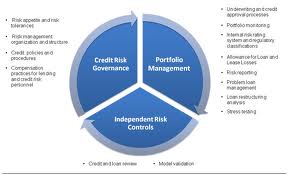Definition of Credit Management
Credit Management is a branch of accountancy, and is a function that falls under the label of “Credit and Collection’ or ‘Accounts Receivable’ as a department in many companies and institutions. They will usually deal with the credit vetting of customers, the resolution of any invoice queries or disputes, allocations of payments or cash application, internal fund movements, reconciliations and also maintaining positive working relationships with customer during the debt collection or credit review and approval process.
A key requirement for effective revenue and receivables management is the ability to intelligently and efficiently manage customer credit lines or credit limits. In order to minimize exposure to bad debt, over-reserving, and bankruptcies, companies must have greater insight into customer financial strength, credit score history and changing payment patterns. Likewise, the ability to penetrate new markets and customers hinges on the ability of a company to quickly make well informed credit decisions and set appropriate lines of credit.
Credit Management has evolved now from being a pure accounting function into a front-end customer facing function. It involves screening of customers and only those who are credit worthy are allowed to do business. A sound review of the financial position of the customer, and understanding of their business model is the first step in ensuring that the company does not end up selling to a customer who ends up seriously delinquent or in default.
Hence, before the sales function commences its business with the particular customer, the credit management role begins. Later as the customer starts dealing with the company, the accounts receivable function is used to ensure recovery as per agreed terms of credit is followed.
Definition of credit risk:
Credit risk is risk due to uncertainty in a counterparty’s (also called an obligor’s or credit’s) ability to meet its obligations. Because there are many types of counterparties—from individuals to sovereign governments—and many different types of obligations—from auto loans to derivatives transactions credit risk takes many forms. Institutions manage it in different ways. (Source internet)
In assessing credit risk from a single counterparty, an institution must consider three issues:
Default probability: What is the likelihood that the counterparty will default on its obligation either over the life of the obligation or over some specified horizon, such as a year? Calculated for a one-year horizon, this may be called the expected default frequency.
Credit exposure: In the event of a default, how large will the outstanding obligation be when the default occurs?
Recovery rate: In the event of a default, what fraction of the exposure may be recovered through bankruptcy proceedings or some other form of settlement?
When we speak of the credit quality of an obligation, this refers generally to the counterparty’s ability to perform on that obligation. This encompasses both the obligation’s default probability and anticipated recovery rate.
To place credit exposure and credit quality in perspective, recall that every risk comprise two elements: exposure and uncertainty. For credit risk, credit exposure represents the former, and credit quality represents the latter.The goal of credit risk management is to maximize a bank’s risk-adjusted rate of return by maintaining credit risk exposure within acceptable parameters. Banks need to manage the credit risk inherent in the entire portfolio as well as the risk in individual credits or transactions. Banks should also consider the relationships between credit risk and other risks. The effective management of credit risk is a critical component of a comprehensive approach to risk management and essential to the long-term success of any banking organization.1 (Coen Mr William).Most of a bank’s funds are used either to make loan or to purchase debt securities. For either use of funds, the bank is acting as a creditor and is subject to credit (default) risk, or the possibility that credit provided by the bank will not repaid. The type of loans provided and the securities purchased will determine the over all credit risk of the asset portfolio. [A bank also is exposed to credit risk if it serves as guarantor]. (Madura, jeff)
An important part of credit risk management is to measure it. This requires a credit assessment of loan applicants. The bank employ credit analyst who review the financial information of a corporation applying for loans and evaluate their creditworthiness. The evaluation should indicate the possibility of that a firm meet its loan payment so that the bank can decide whether to grant the loan. (Madura, jeff)
















